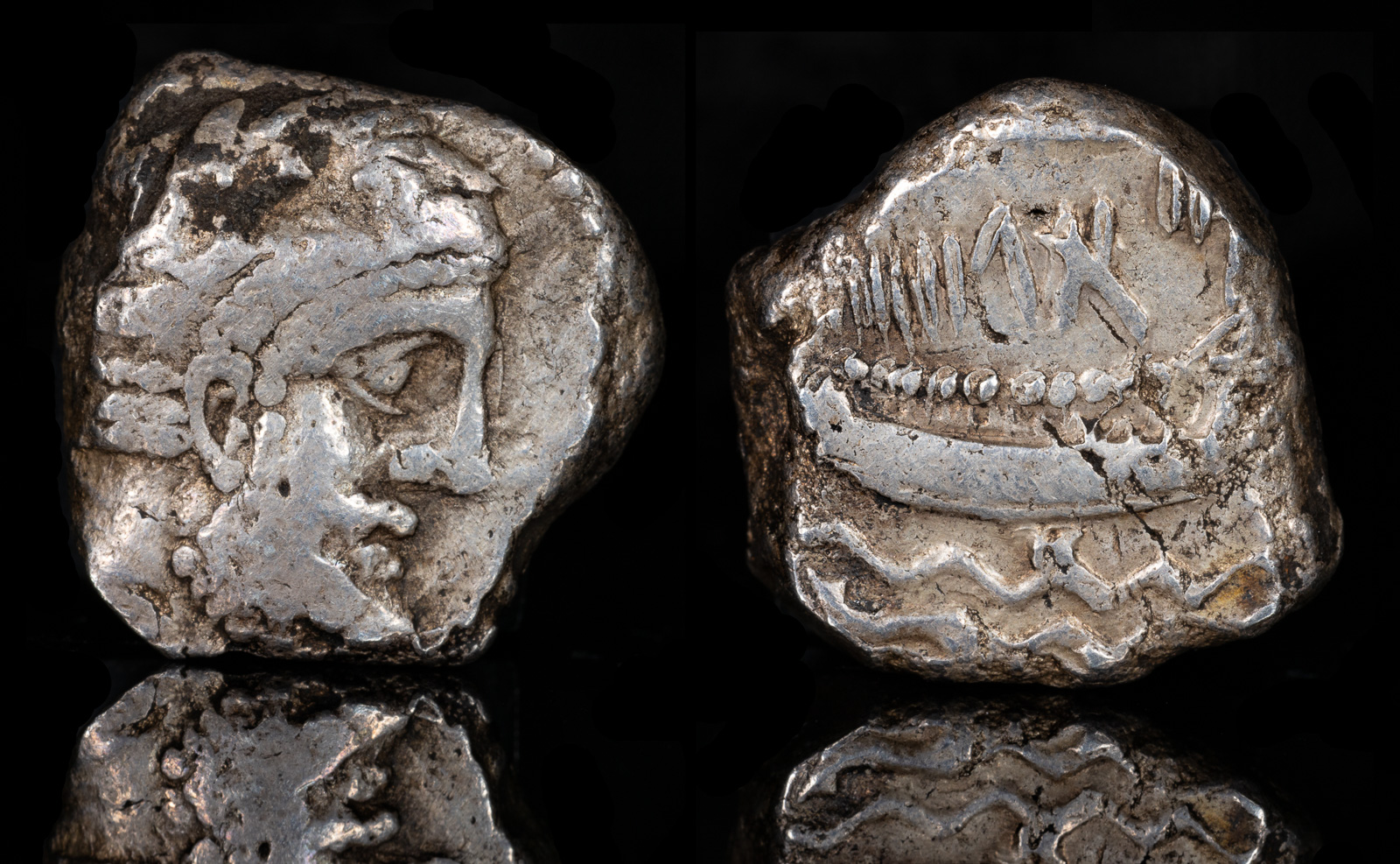
Phoenicia, Arados AR Stater
King Gerashtart (Gerostratos)
Dated RY 6(?) = 335/334 BCE 10.35g, 18mm, 10h.
Laureate head of Ba’al-Arwad to right / Galley to right with [Pataikos on prow], above waves; MA G and date (all in Phoenician) above.
Betlyon 29, note 106; DCA 753; HGC 10, 36
Ex collection of Z.P., Austria
Now called Arwad and located in Syria, Arados has a history that stretches back more than four thousand years. One of the major Phoenician cities along with Tyre, Byblos, and Sidon, Arados was actually an island and today it’s the only inhabited island in Syria.
As with the other Phoenician cities, Arados maintained its trading independence through occupations by numerous empires. When Alexander the Great came along, they immediately surrendered the city to him and threw off the yoke of the Persians. Their navy then joined in the effort to reduce Tyre.
Roughly around this time, some evidence indicates that a large Jewish population lived there. Other documents show that the city was among the first Republics and was governed by the people for some time, though it was likely still heavily influenced by the most important traders.
Arados minted the typical Alexander coinage after coming under his control. This coin was minted before that time and depicts a Phoenician galley on the reverse. As with all Phoenician cities, trade was of vital importance to them.
Thutmose III of Egypt takes Arados on his Syrian campaign.
The Assyrian king Tiglath-pileser I records that he sailed in boats of Arados.
Ashurbanipal of Assyria forces Arados under King Yakinlu to submit and give one of his daughters to his harem.
September 26
Aegina plays a significant role in the Greek naval victory against the Persian Empire in the Battle of Salamis. Byblos, Arados, Tyre, Halikarnassos under Artemisia, Kos, and Sidon support Darius. Chalkis and Kythnos support the Greek effort. Alexander I serves as a peace negotiator on behalf of the Persians.
Sidon, Byblos, and Arados under Gerostratos submit to Alexander the Great as he travels through Phoenicia.
Alexander the Great completes the Siege of Tyre. 6000 soldiers are killed in the city, 2000 Tyrians are crucified on the beach, and 30,000 are sold into slavery. Their leader Azemilkos is pardoned but deposed. Gerostratos of Arados presumably plays a part.
Arados removes its royalty and becomes a free city in the Seleukid Empire.
258 BCE
Antiochos II Theos of the Seleukid Empire fights the Second Syrian War against Ptolemy II Philadelphos of Egypt. Arados takes the side of Antiochos.
Marc Antony comes to Arados in search of money and is vigorously opposed.